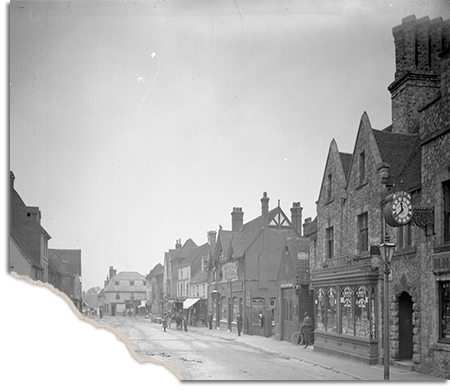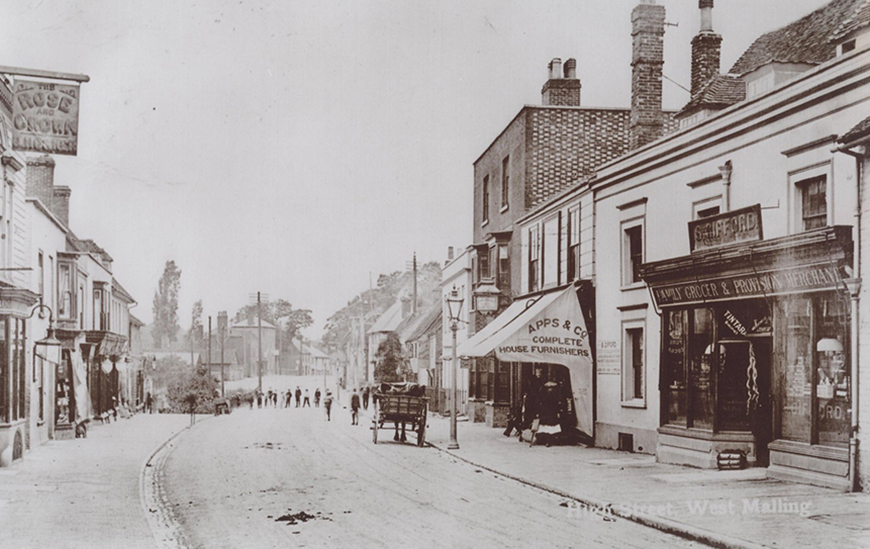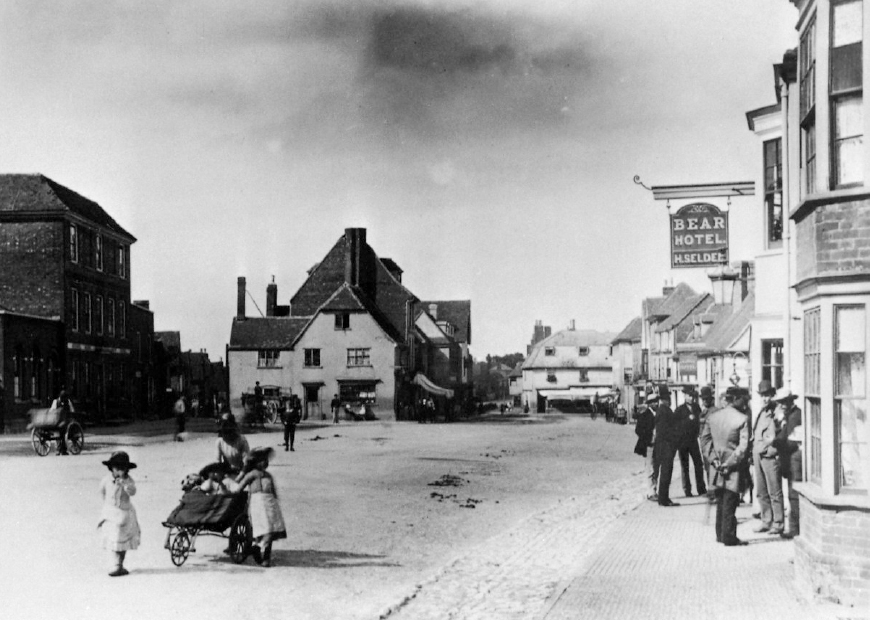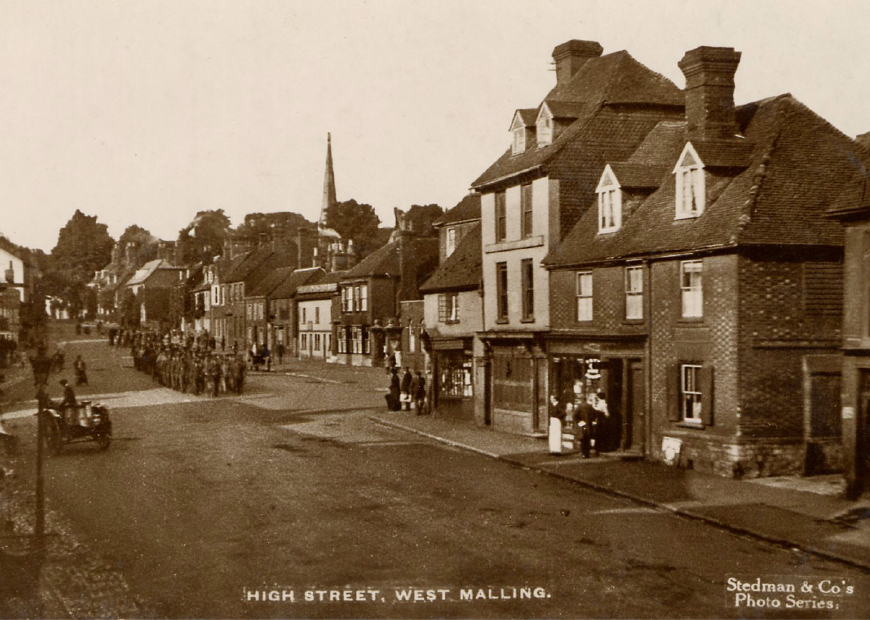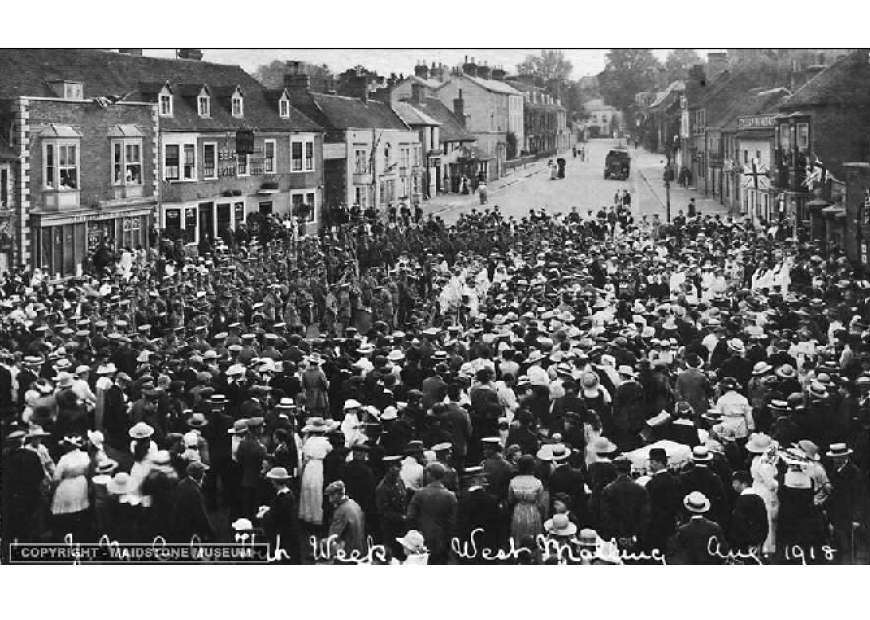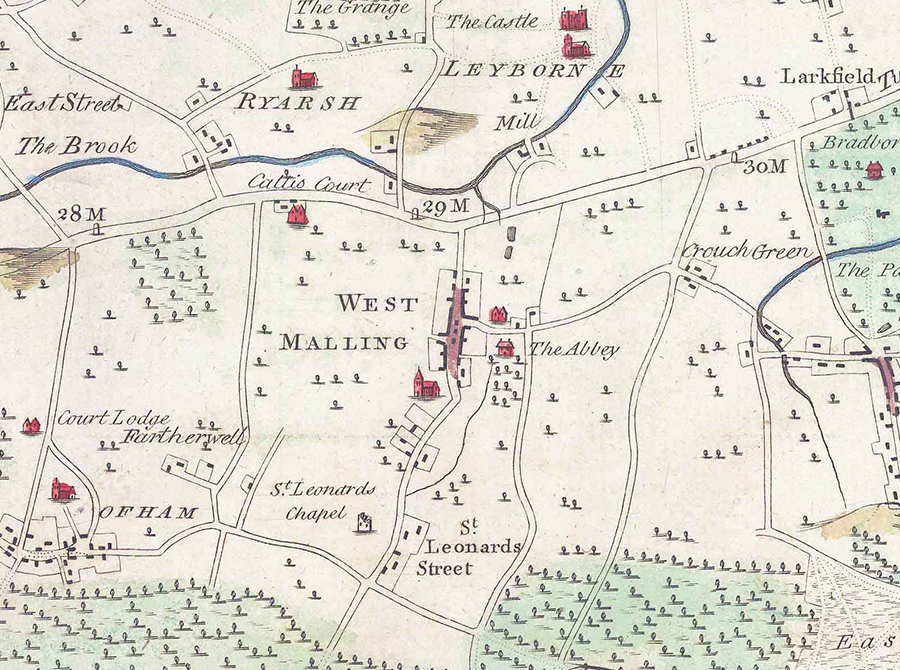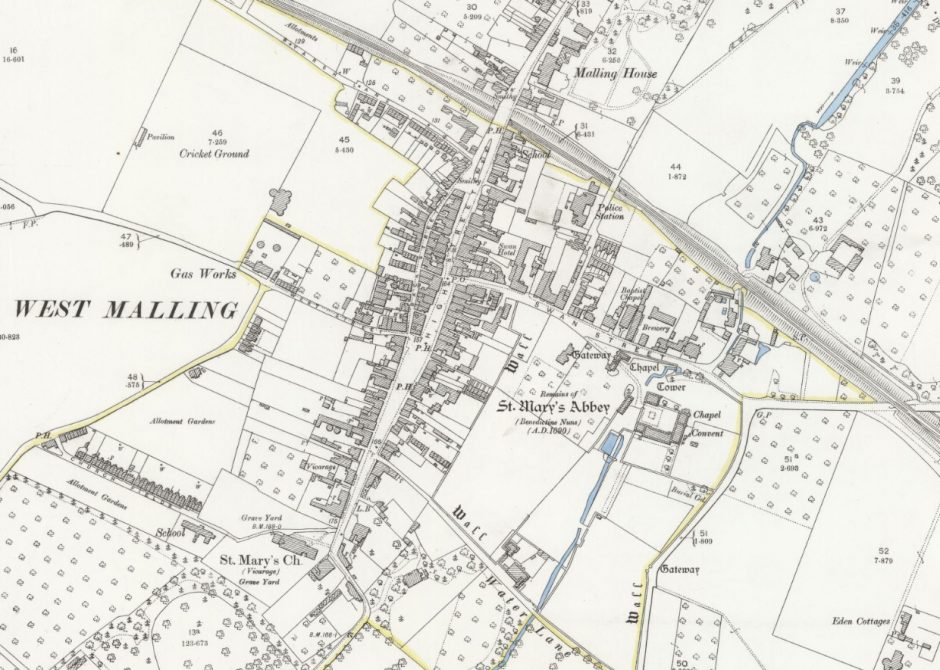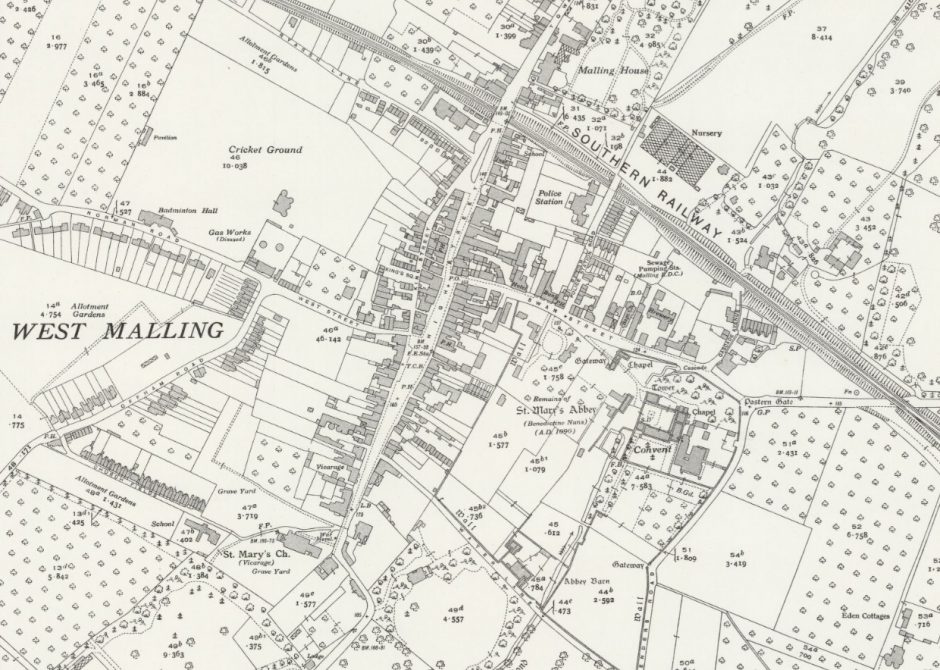High Street
West Malling
Select a High Street property to explore:
Location
Postcode
ME19 6NA
What 3 Words
lion.weeks.drank
GPS
DD 51.29473, 0.40884
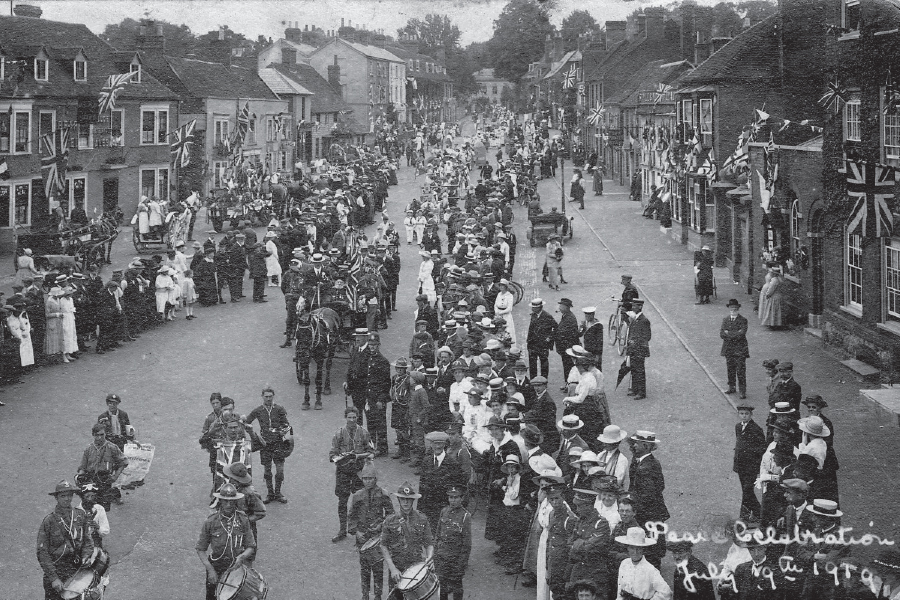
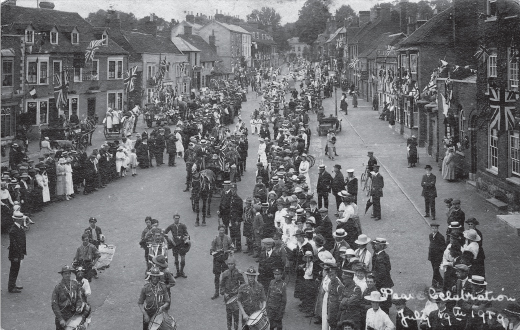
Peace Celebrations in West Malling High Street, 1919
© Copyright Snodland Museum
For centuries, the High Street in West Malling has been the beating heart of the town’s social life and no more so than when residents, business owners and shop keepers have come together to celebrate an occasion or to enjoy a local event. The weekly market and annual Malling Fair were consistent features of the Malling calendar for generations before they slipped in and out of favour during the 20th century but other events have always ensured enthusiastic attendance, especially during times when the options for entertainment at home were more limited.
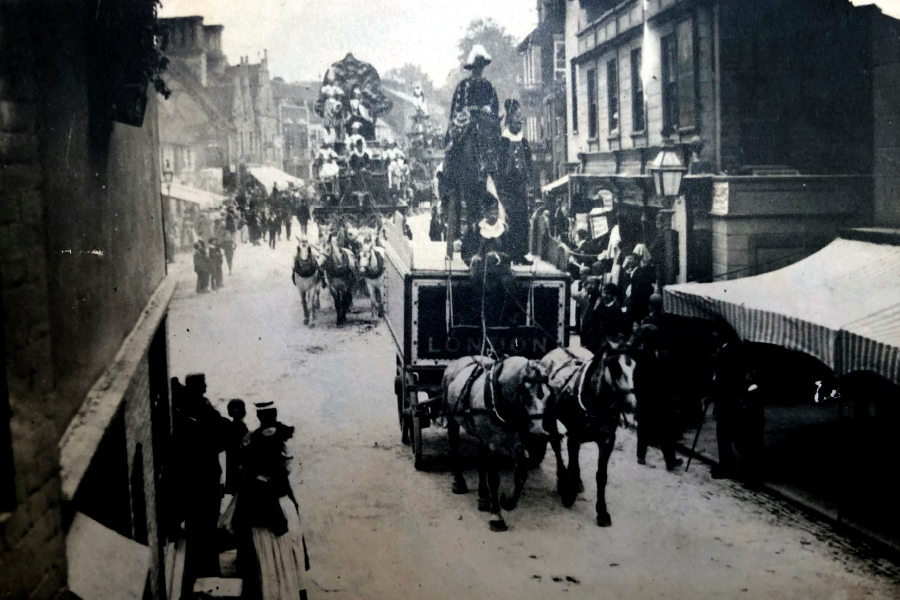
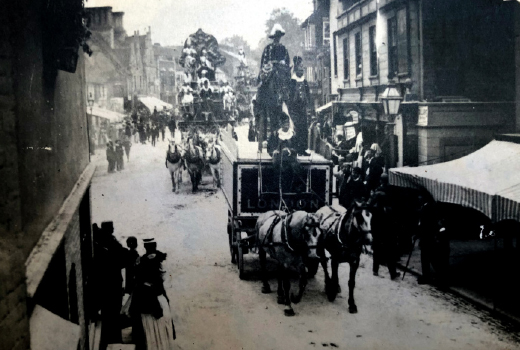
The Sanger Circus Parading through West Malling High Street
© Copyright The Women’s Institute.
The Day the Circus Came to Town
Sangers Circus Parades through the High Street
By the 1880s, Sanger had built sufficient a reputation to be regarded as the British equivalent of US showman, Barnum. Audiences of his circus spanned all classes from the working class through to public figures and royals, even including Queen Victoria – all would turn out to view the unusual, the spectacular and the exotic. Many of the acts were deliberately tailored to appeal to the mood of the nation – exotic animal displays including elephants and lions, to demonstrate the reach of the British Empire, through to battle re-enactments to reinforce patriotic identity.
Although it is unclear exactly where the Sanger big tent was pitched, the photos which can be found in the West Malling Women’s Institute Scrapbook show one of their typical promotional parades running along the High Street to announce, in the grandest of style, that the circus had come to town, one of 200 locations across the country the troupe visited within a nine-month season. The ornate carriages pulled by teams of white horses accompanied by the fully costumed troupe must have been a spectacular sight.
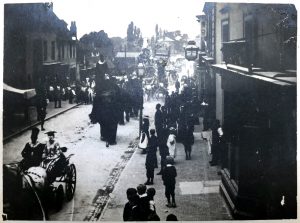
As far as we are aware, the two photos featured in the WI Scrapbook are the only ones to survive that show the circus in West Malling. We are therefore especially thankful to the University of Sheffield for allowing us to feature some further photos taken from National Fairground and Circus Archive, which give us a better idea of how the show and its performers would have looked. Photos provided by the National Fairground and Circus Archive, The University of Sheffield.
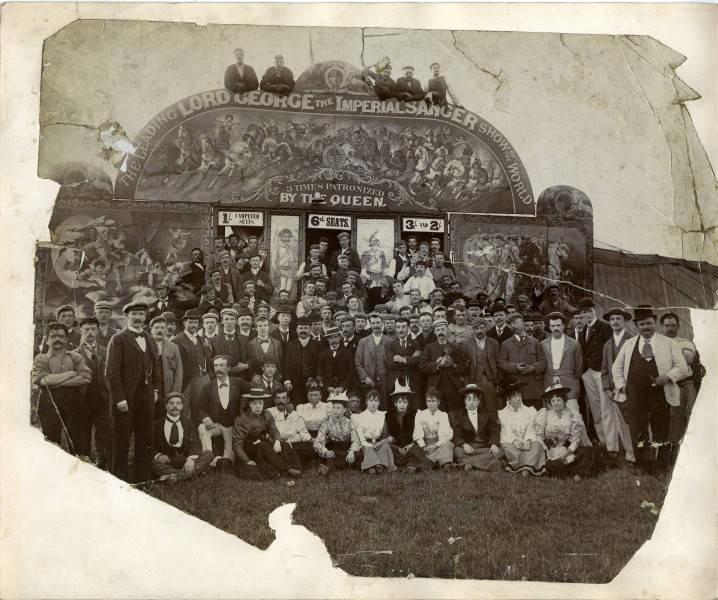
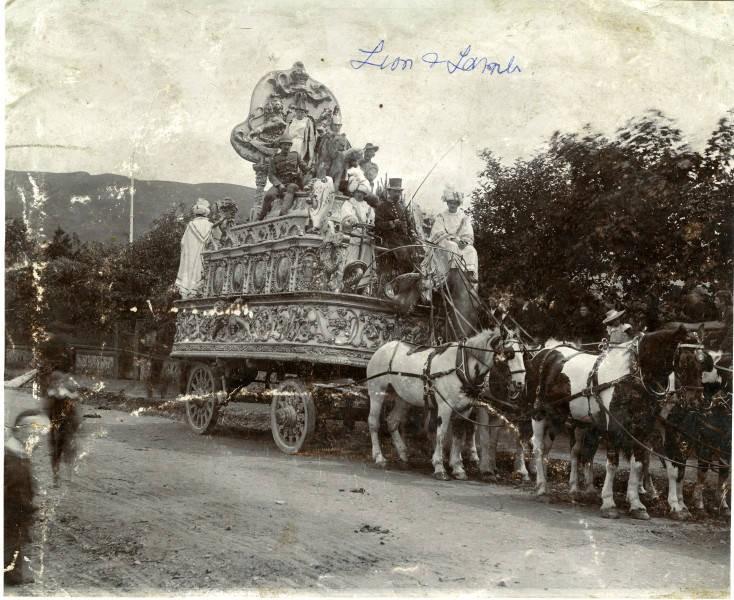
George Sanger’s father, James, was press ganged into the Navy as a young man and it was during this time that he learnt the conjuring tricks that would form the basis of his later career as a travelling showman. Born into the showman life, George followed in his father’s footsteps starting as an animal tamer – although this was independent of his father, he soon rejoined his family forming a partnership with his brothers William and John, acquiring the nickname of ‘Gentleman George’ and ‘his Lordship’ from his father due to the smart way he dressed.
Sanger sold his Circus in 1905 but his retirement would be relatively short-lived. Unsurprisingly for a lifelong showman, his passing was far from a peaceful affair being gruesomely murdered by employee Herbert Charles Cooper with a hatchet! Cooper committed suicide on a railway line following the incident taking the reason for his attack with him to his grave, so to this day there is no explanation for his drastic action (2).
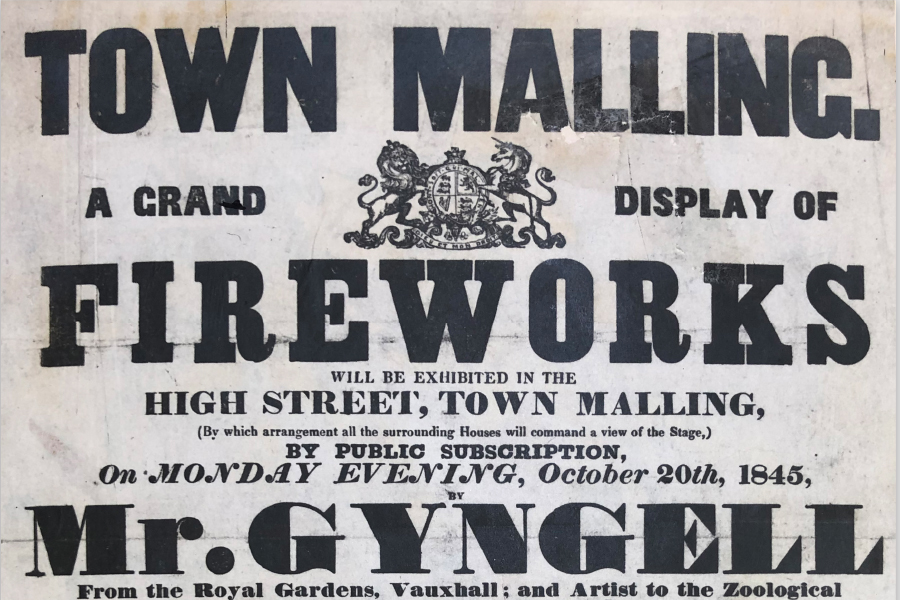
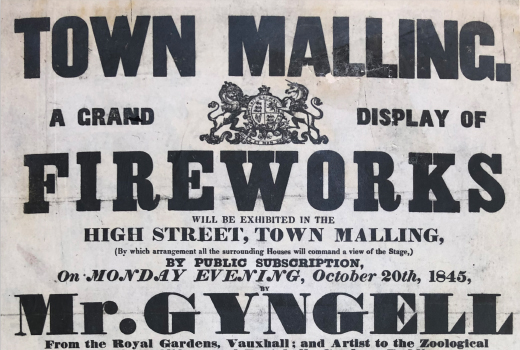
Promotional poster for Fireworks Display
© Copyright The Women’s Institute
A High Street Spectacular
My Gyngell’s Grand Display of Fireworks
Sadly, we have so far been unable to unearth much about the pyrotechnical showman that was Mr Gyngell, which is somewhat surprising due to the reach of his shows across the country. As you can see from the poster, it would be unfair to describe Mr Gyngell’s performances as being confined to just Fireworks. These obviously formed a central part of his shows but were supplemented by other spectacular and often dangerous performances, all designed to appeal to the public’s appetite for curiosity and excitement. This included intriguing illusions through to feats of daring and bravery such as high rope walking.
MR. GYNGELL ON THE FIERY ROPE!
The rope for this dauntless undertaking is fixed in the form of an inclined plane, from the ground to an altitude of FORTY FEET!! The performer will run up and down, in the midst of an immense CHEVAUX DE PRIZE OF FIRE-WORKS.
Worcester Journal, 1839
***
Many were excited to witness these spectacles whereas some corners of society began to question whether ‘”high rope dancing” and other sensational and dangerous performances were essential to the amusement of the British public in their hours of relaxation’, especially following the death of performer Selina Powell, who stage name was the “Female Blondin”, at Aston Hall. Among those to be shocked by this tragic accident was Queen Victoria who wrote an open letter to the mayor of Birmingham explaining her horror
‘that one of her subjects, a female, should have been sacrificed to the gratification of the demoralising taste unfortunately prevalent for exhibitions attended with the greatest danger to the performers’. (3) The strength of the resulting negative reaction led to Gyngell to defend his ‘profession’ but his response, which was featured in the Times, was somewhat ridiculed and undermined by the wider press as we can see from this article taken from the Spectator…
Gyngell…considers himself aggrieved. He walks the high rope, and protests in the Times against the “dictation” which would put a stop to the public amusements of the poor. People going down a mine, he says, risk their lives, and if mines are necessary, steeplechasing, fox-hunting, and horse racing are not, and are all dangerous. Gyngell mistakes the question at issue. The Queen and all decent persons are not exerting themselves to save his neck. Nobody objects to his running as much risk as he likes, or dancing on the vane of Salisbury Cathedral in the dark, if he prefers that mode of execution. What they do object to is the collection of crowds to see him do it for hire, without any risk to themselves…
* * *
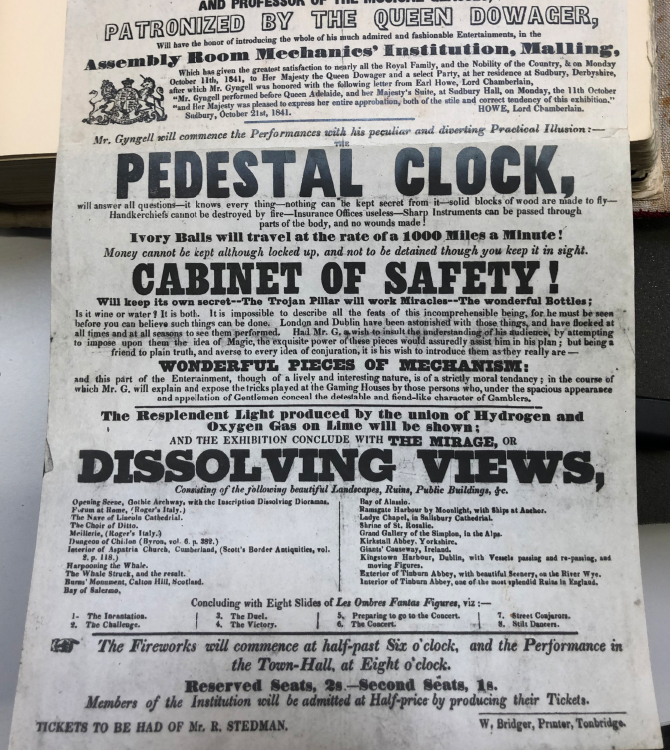
Gyngell’s outside entertainment at West Malling was accompanied by an indoor performance at the ‘Assembly Room Mechanic’s Institution, Malling’. This would undoubtedly have been at what is still known today as the Assembly Rooms but any record of the mechanic’s institution in the town has proved hard to come by. Established to provide adult education, especially in technical subjects, to working men in Victorian era Britain, mechanic’s institutions were often funded by local industrialists as it was assumed they would benefit from having more knowledgeable and skilled employees. With the inclusion of resources such as libraries, it was hoped that they would provide a suitable distraction to the less desirable activities such as gambling or drinking in pubs. The first mechanic’s institute in England was founded in Liverpool in 1823 (4).
West Malling Fair
First recorded in 1312 (5), West Malling Fair had been held on St Leonards Day (November 17th) for generations before practicalities of the 20th century led to it being discontinued during the 1930s.
Known locally as Stag Beetle Fair (6), it featured a mix of auctions, traders stalls and public entertainment. During the day the High Street, along with many other areas of the town, were dedicated to the trading of livestock – Ryarsh Lane was used to run horses, Swan Street & Police Station Road to show ponies & bulls and a cattle market was held on the cricket meadow. The hectic mix of activity that took over the town must have been an exciting, albeit potentially dangerous spectacle…
“The children had to be kept in all day because it was dangerous with all the animals. They used to stay on the terrace in Ryarsh Lane and watch the horses rush up and down.”
Mrs Edith Alice Goodger (nee Webb)
“Cattle would be all over the place.”
Mr Joseph Dunn (7)
Joseph also recalls how the stables of all the public houses in the town were full of visitors’ horses and how the pubs would prepare cooked lunches to satisfy the demands of this influx of visitors. Other businesses naturally also enjoyed the opportunity to increase their sales – Mr Foreman, (the baker who occupied what is now Franks) made brandy snaps, Mr Weller was at hand to pierce the ears of the Pettigrew children (the family who ran the fun fair and whose total number seemed to increase by one every year) and a range of other stalls were setup in the street to sell popular treats such as whelks and sweets.
The rest of the High Street was taken up with a variety of stalls and entertainment – some were the usual attractions you would expect to find at a fair – children’s rides, (set up outside Smith’s – KHP), a toy stall (outside of The George – Tesco) and a ‘Cheap Jack’s’ which sold haberdashery, crockery and earthenware. Alongside these were a selection of what would today be regarded as slightly more unusual offerings including a travelling dentist and a boxing stall. The boxing stall stood in front of The Bear (The Farmhouse) where a pair of gloves were hung outside the booth as a challenge to passers-by. The proprietor would encourage men to take up the challenge to test their skills in the ring and when two likely competitors had been found, spectators would be charged 2d to watch the ensuing battle. It is difficult to know whether this activity would have resulted in more, or less pain than the alternative of agreeing to be ‘treated’ by the travelling dentist. A gentleman would stand outside the dentist’s tent beating a drum and crashing his cymbals in order to drown out the cries emanating from within. The ‘patient’ wouldn’t be charged for their ordeal but the onlookers would be asked to contribute towards the amusement that the poor victim had created. Last, but by no means least, on the list of entertainment was a menagerie of exotic animals including lions and elephants that was stationed in front of the Five Pointed Star.
Notes
- Sanger Circus Collection – National Fairground and Circus Archive – www.sheffield.ac.uk
- Lord George Sanger – Wikipedia
- A Trip To The Circus: Female Performers and their Impact on Society
- Mechanic’s institute – Wikipedia
- BHO – British History Online website
- West Malling Women’s Institute Scrapbook published c1955. Original held at the Kent Archives – Ch92/B/5/Z1
- Memories of West Malling – In the early 20th Century Vol 2. Produced by The Malling Society 2011 by Ron Martin, Society Researcher
